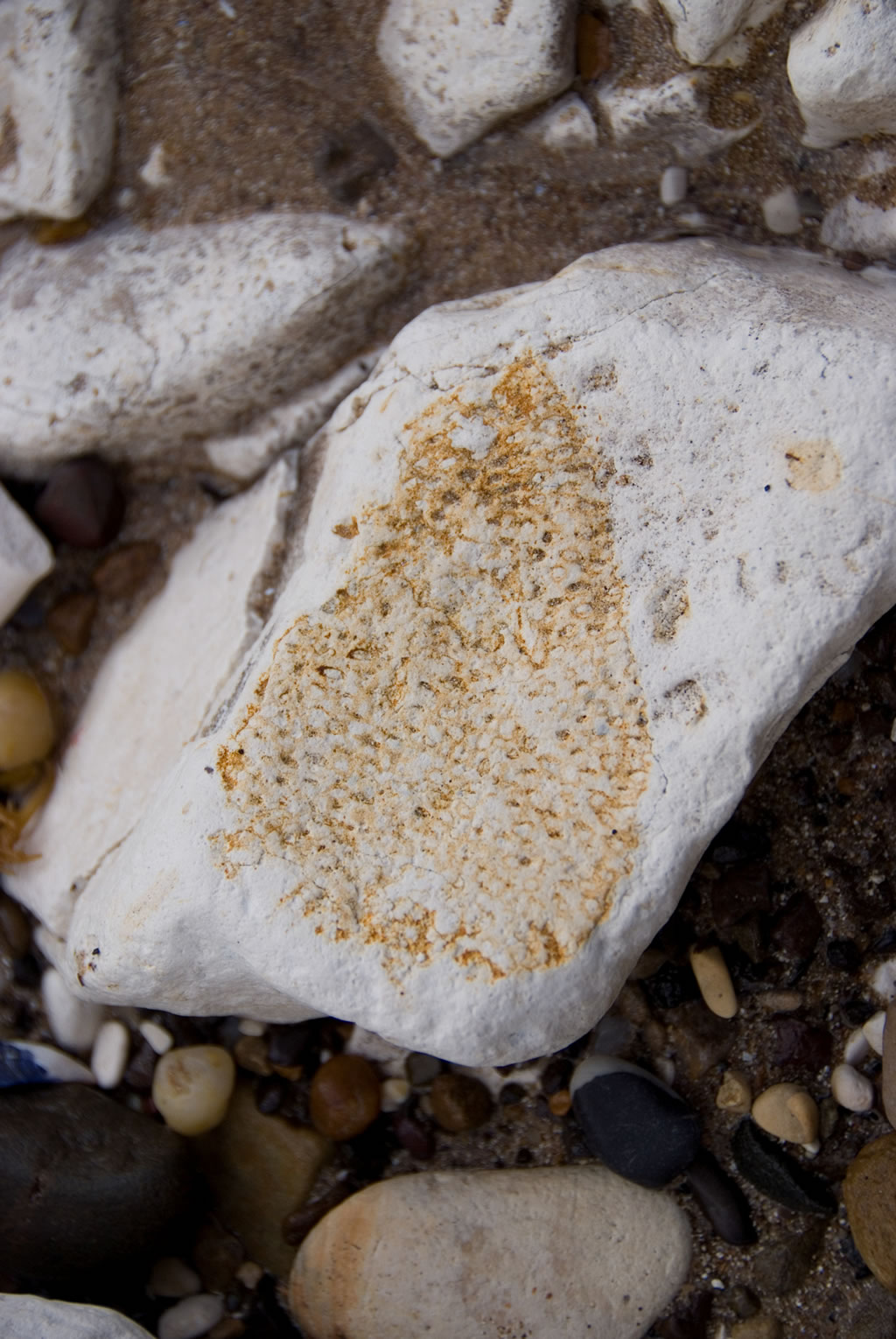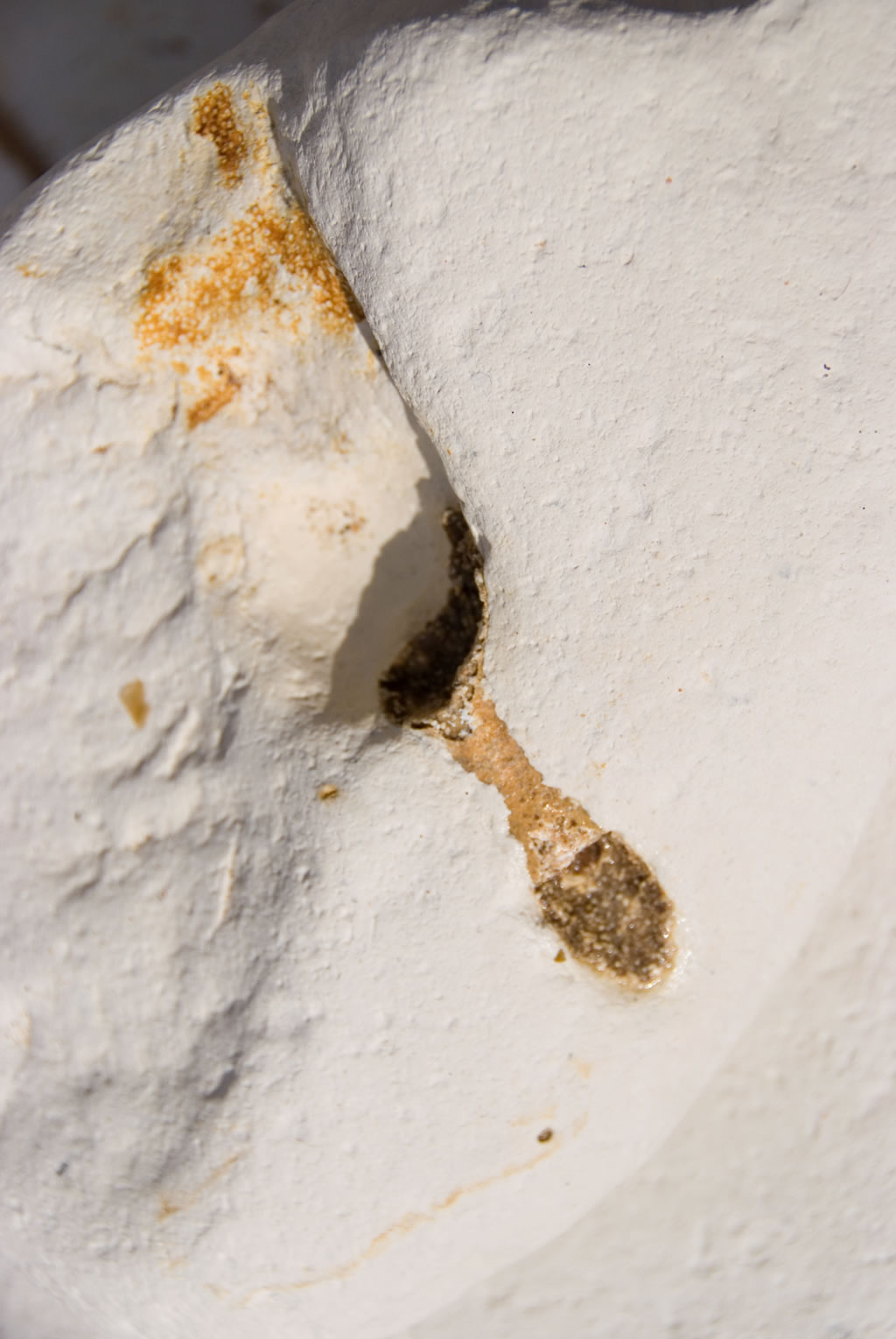The beach at Bridlington is popular with tourists and ideal for children. However, towards Sewerby, the beach becomes increasingly rocky and it is here you can find excellent fossil sponges. Despite these being more common at Bridlington, Sewerby is picked over by collectors, so you are more likely to come across something.
DIRECTIONS
♦ Head towards the North Beach at Bridlington. From the B1254, take the road along the seafront.
♦ There is a large car park at the North Beach. Park here and walk down to the beach. From here, you can walk north towards Sowerby.
♦ For those interested, at the South Beach you can sometimes find the Bridlington Crag, which is full of fossil molluscs. This crag is beneath the sand dunes, so digging is required. Park at the large car park, which is also used for the park and ride service.
♦ Ref: TA 19803 68580
PROFILE INFO
FIND FREQUENCY: ♦♦♦♦ – Fossils are very common at Bridlington. However, they are perhaps not as common as further up the cost at Danes Dyke, but the location is still very productive. The rocks are also harder here than at Danes Dyke, although softer rocks with sponges exists along the foreshore, but the fossils do tend to be less fragile than those of Danes Dyke.
CHILDREN: ♦♦♦♦♦ – This is a popular seaside town, with a beach suitable for all the family. Both Bridlington and also nearby Danes Dyke are superb locations for children. However, Bridlington has an added advantage of having a sandy beach to the southwest and is close to toilets, cafes and facilities in the town. For this reason, it is more practical for families than Danes Dyke.
ACCESS: ♦♦♦♦ –
There is an excellent car park with toilets, a cafe and so on, and it is a very short walk to the beach. There is a lovely sandy beach for children, with plenty of other things to do in the town.
TYPE: – Most fossils are found in the fallen chalk boulders on the foreshore, but they can also be found in the cliff. However, we do not recommend collecting from near the cliff, as it is too dangerous.
FOSSIL HUNTING
Bridlington is an excellent location for all the family. The beach is full of rocks and fossils sponges, most of which come from further up the coast at Danes Dyke. Danes Dyke is a far better access point to collect sponges, but Bridlington is much more practical for families. The chalk is older here than at Danes Dyke, so some different fossils can be found to those from Danes Dyke. The fantastic sponges are common, but there is a huge variety of other fossils to be also found. Various molluscs, echinoids and belemnites are also common, along with crinoids including complete cups.

The best fossils are found by searching the boulders on the foreshore. It is also a good idea to try to split a few of these, as the sponges are best when clean and unweathered, and the best specimens are not on view. Sponges can also be seen in the sides of boulders and in the cliff, and the chalk is soft, so it is fairly easy to get these out.
Echinoids can usually be collected by simply searching along the foreshore, and their spines and crinoid plates can also found in the same way in loose rocks. At South Beach, pieces of jet can also be found.

GEOLOGY
The chalk at Bridlington is White Chalk Subgroup from the Campanian stage of the Cretaceous and is part of the Flamborough Chalk Formation. It includes the famous sponge beds, which can also be found along the foreshore. The chalk is white, well-bedded and flint-free, with common marl seams (typically about one every metre). There a common stylolitic surfaces and pyrite nodules The formation is up to about 265m thick (onshore).


SAFETY
Common sense when collecting at all locations should be used and knowledge of tide times is essential. The tidal conditions at this part of the coastline can be very dangerous, so make sure you return before the tide turns. The cliffs are quite high, so it is important to keep away from their base, as rocks often fall.
EQUIPMENT
A hammer, chisel and eye protection are required at this location. Suitable footwear should also be worn. Fossils should be wrapped well and placed carefully into containers. It may be best also to take preserving liquid to preserve fossils such as the fantastic corals that can be found. A pry bar may also come in handy for prying rocks with natural cracks open and a lump hammer for breaking apart rocks.
ACCESS RIGHTS
This site is a site of special scientific interest (SSSI). This means you can visit the site, but hammering the bedrock is not permitted. For full information about the reasons for the status of the site and restrictions, download the PDF from Natural England.
It is important to follow our ‘Code of Conduct’ when collecting fossils or visiting any site. Please also read our ‘Terms and Conditions‘
LINKS
♦ Buy Fossils, Crystals, Tools
♦ Location Discussions
♦ Deposits Magazine
♦ Join Fossil Hunts
♦ UK Fossils Network





































